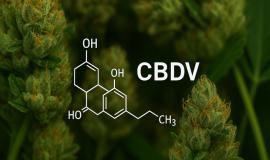
Flavonoids in Cannabis. What Do They Do and How Do They Work?
Most of you have heard about strain types, cannabinoids, and terpenes, but flavonoids have been somewhat overlooked.
What Are Flavonoids?
Flavonoids or bioflavonoids are a group of bioactive compounds found in numerous plants, including cannabis, where they make up for a substantial part of the compounds. There are thousands of identified flavonoids and the ones found exclusively in cannabis are called cannaflavins. Flavonoids are found in high quantities in foods such as berries, bananas, citrus fruits, onions, red wine, and dark chocolate.
What Do Flavonoids Do?
Flavonoids are primarily responsible for the color of the plant, as well as its smell and flavor in synergy with cannabis terpenes. Whenever you are awed by colors of the plant that is not green, like the yellow or purple in certain cannabis strains, or even the red in a berry, that is the work of flavonoids. In fact, the word comes from the Latin word flavus or yellow, denoting its color in nature.
Working together with cannabinoids and terpenes, flavonoids also contribute to the so called entourage effect.
But that is not all. Flavonoids provide bright colors - red, blue, yellow - to attract pollinators, they protect the plant from UV rays, and act as inhibitors of organism causing plant diseases.
What Are the Health Benefits of Flavonoids?
Flavonoids, including the ones only found in cannabis have a number of potential medical benefits including the following effects:
- Antifungal
- Antioxidant
- Reduced cancer risk
- Reduced blood pressure
- Antiinflammatory
It is believed that together with cannabinoids and terpenes flavonoids offer an entourage effect, which may vary in accordance with the combination/ratio of these active compounds.
Conclusion
Flavonoids are severely under researched and flavonoid testing is not a common occurrence. A lot more research is needed but the preliminary results are promising.
Health Disclaimer: The information provided in this article is for educational purposes only and should not be taken as medical advice. Always consult with a qualified healthcare provider before using cannabis, particularly if you have pre-existing conditions or are taking medication.





















